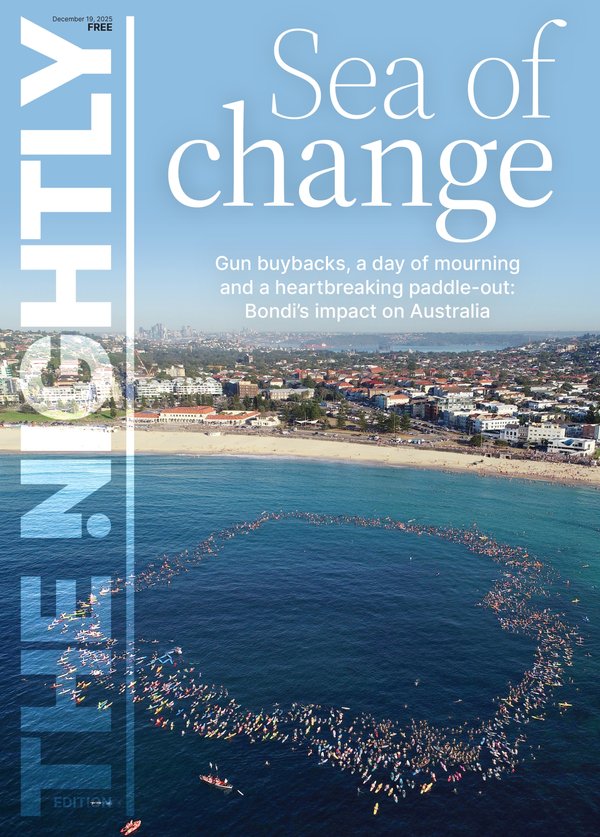Sophia Rose Flanigan murder case: Expert reveals why parents kill their children

A leading expert into filicide in Australia believes a Queensland mother who allegedly murdered her three-year-old daughter last week was experiencing a “psychotic break”.
Emeritus Professor Thea Brown also revealed the Sunshine State has the highest rates of filicide in the country, and a child is killed by their parents every two weeks in Australia.
The alarming statistics come as the nation reels from the tragic case of three-year-old Sophia Rose Flanigan, who was alleged to have been murdered by her mother Lauren Ingrid Flanigan last week.
Sign up to The Nightly's newsletters.
Get the first look at the digital newspaper, curated daily stories and breaking headlines delivered to your inbox.
By continuing you agree to our Terms and Privacy Policy.The 32-year-old, who had been charged with murder the morning after Sophia’s death, died on Sunday night after being found unresponsive in her prison cell at Brisbane Women’s Correctional Centre on Friday.
Professor Brown, who formed the Monash Deakin Filicide Research Hub, said cases of maternal filicide were often harder to comprehend.
“Mothers are supposed to be the carers of children, particularly very young children, and it’s just very hard to contemplate that they may become the person who kills the child or sometimes children,” she said.
“It just cuts across everything we understand about mothers and parenting and looking after little children.
The family violence activist said that filicide - the deliberate act of a parent killing their own child - is not that rare in Australia.
“It’s not frequent, but it happens regularly, with the same number of deaths year after year, with some slight increases in recent times,” she said.
“Our research suggests that there’s a constellation of factors, which we call red flags, and those red flags vary according to the parent type.
“So you’ve got one set for mothers, another set for fathers and another set for stepfathers.”
Prof Brown, a lead researcher and co-author of the first national report into filicide in Australia, said mental illness was the “most important factor in the constellation”.
“It is mostly depression but it does include psychotic breaks, and I suspect this lady in Queensland was having one of those,” she said.
“So the most important factor that we found with mothers was mental illness, mostly depression, but sometimes psychosis, but also – and I’m not suggesting it was so in (either cases)– being a victim of domestic violence.”
The constellation of risk factors include being diagnosed with a mental illness, being separated from the father of their children, having a criminal history, being a victim of domestic violence, abusing drugs or alcohol and history of abuse as a child.
Prof Brown’s research found that one child almost every fortnight is killed by a parent or step-parent.

The Monash University-led report, which examined 12 years of data, showed that mothers killed 47 per cent of the children and often through less violent methods than the men who committed filicide.
In Professor Brown’s research, Queensland emerges as the filicide capital of Australia.
“What we found in our research was areas which had no services or very low levels of service had high rates of filicide, and that’s been shown in studies overseas too.
“We did find it was more common in rural areas.”
In Australia, rates of filicide have remained steady for decades, with around 20 cases each year.
“I think we’re getting more events of multiple children being killed,” Prof Brown said.
“Certainly in the last study we did, there were more multiple deaths, which is very alarming.
“We’ve seen some shocking cases in Australia recently and they’re very hard to understand.”
Last year ANROWS and the Australian Domestic and Family Violence Death Review Network released a new report into filicides in Australia.
The report examined 113 cases of filicide from 2010 to 2018, finding that 76 per cent of filicides in Australia occur within the context of domestic and family violence, involving a history of child abuse, intimate partner violence or both.
“Our research demonstrates when mothers killed their children, it often followed a history of experiencing intimate partner violence,” ANROWS CEO Tessa Boyd-Caine told The Nightly.
“Looking at the gendered nature of these differences is necessary if we are to prevent filicides in the context of domestic and family violence.
“It highlights the complexity of filicide offending, gives context to the violence that often precedes filicides, and counters the myth that they are random acts of violence.”
If you or someone you know needs mental health support, phone: Lifeline 13 11 14 or beyondblue 1300 224 636.
If you or someone you know is experiencing family violence, phone 1800 RESPECT or the Crisis Care Helpline on 1800 199 008.

